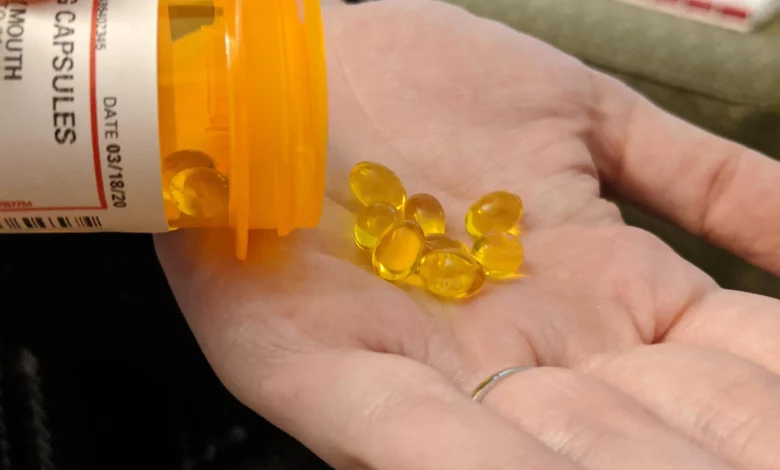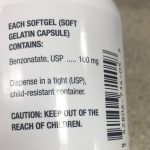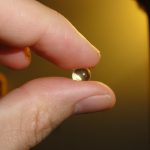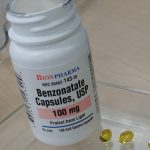10 Benzonatate Warnings You Should Not Ignore

Benzonatate is a medication used to relieve coughs caused by colds, flu, and other respiratory infections. It is a non-narcotic cough suppressant that works by numbing the throat and lungs, reducing the cough reflex.
The development of benzonatate dates back to the 1950s when it was first synthesized by American chemist Paul Machmer. Machmer was working at the time for the drug company Pfizer and was tasked with developing a non-narcotic cough suppressant that would be more effective and less addictive than existing cough medicines.
After several years of research, Machmer discovered benzonatate, which he patented in 1958. Pfizer then developed and marketed the drug under the brand name Tessalon. Tessalon became available by prescription in the United States in 1958.
Since then, benzonatate has become a widely used cough suppressant and is available under various brand names, including Tessalon, Zonatuss, and others. It is considered safe and effective for most people, although it may cause side effects in some, including dizziness, drowsiness, and headache. It is important to follow the recommended dosage and to consult a healthcare provider before taking this medication.
How Is Benzonatate Used
Benzonatate is used to relieve coughs caused by colds, flu, and other respiratory infections. It is a non-narcotic cough suppressant that works by numbing the throat and lungs, reducing the cough reflex.
Benzonatate is available in capsule form and is taken orally with or without food. The capsules should not be crushed, chewed, or dissolved in the mouth as it may cause numbness or tingling in the mouth and throat.
The recommended dosage of benzonatate may vary depending on the individual’s age, medical condition, and other factors. It is important to follow the dosage instructions provided by the healthcare provider or on the label.
Benzonatate is usually taken every 8 hours, but the dosing frequency may be adjusted depending on the severity of the cough. It is important to continue taking the medication as prescribed, even if the cough improves.
Here are the general dosing guidelines for benzonatate:
For adults and children 10 years of age and older:
• The usual dosage is 100 mg to 200 mg every 8 hours, as needed, up to a maximum of 600 mg per day.
For children under 10 years of age:
• The safety and effectiveness of benzonatate have not been established in children under 10 years of age.
It is important to never exceed the recommended dose of benzonatate, as it may cause serious side effects, including seizures, confusion, and difficulty breathing. If you miss a dose of benzonatate, take it as soon as possible. However, if it is almost time for your next dose, skip the missed dose and continue with your regular dosing schedule. Do not take a double dose to make up for a missed dose.
Benzonatate is generally well-tolerated, but it may cause side effects in some people, including dizziness, drowsiness, headache, and upset stomach. It is important to consult a healthcare provider if any side effects persist or worsen.
10 Benzonatate Warnings
Benzonatate is generally safe and well-tolerated when used as directed. However, there are some important toxicity warnings that should be considered before taking this medication. Here are 10 warnings about benzonatate you should note while taking the medication:
1. Allergic reactions: Some people may be allergic to benzonatate or other related medications. Signs of an allergic reaction may include hives, rash, itching, difficulty breathing, or swelling of the face, lips, tongue, or throat. If you experience any of these symptoms, seek medical attention immediately.
2. Choking and aspiration: Benzonatate capsules should not be chewed, crushed, or dissolved in the mouth as it may cause numbness or tingling in the mouth and throat, leading to choking and aspiration (inhaling food, liquids, or medication into the lungs). This can be a life-threatening condition.
3. Drowsiness and dizziness: Benzonatate may cause drowsiness or dizziness, especially at higher doses. Do not drive, operate heavy machinery, or engage in activities that require alertness until you know how the medication affects you.
4. Alcohol and other sedatives: Benzonatate may interact with alcohol and other sedatives, increasing the risk of drowsiness, dizziness, and other side effects. Avoid drinking alcohol or taking other sedatives while taking benzonatate.
5. Pregnancy and breastfeeding: The safety of benzonatate during pregnancy and breastfeeding has not been established. Consult your healthcare provider before taking this medication if you are pregnant or breastfeeding.
6. Children: The safety and effectiveness of benzonatate have not been established in children under 10 years of age. Use in this population is not recommended.
7. Elderly: Elderly patients may be more sensitive to the effects of benzonatate, especially drowsiness and dizziness. Use caution when taking this medication in older adults.
8. Lung disease: Benzonatate may worsen certain lung conditions, including asthma, chronic obstructive pulmonary disease (COPD), and emphysema. Consult your healthcare provider before taking this medication if you have any underlying lung conditions.
9. Seizures: Benzonatate may lower the seizure threshold in some people, increasing the risk of seizures. Consult your healthcare provider before taking this medication if you have a history of seizures or epilepsy.
10. Overdose: Taking too much benzonatate can be dangerous and may cause serious side effects, including seizures, confusion, and difficulty breathing. Seek medical attention immediately if you suspect an overdose.
It is important to discuss any medical conditions, medications, or supplements you are taking with your healthcare provider before taking benzonatate. If you experience any unusual symptoms or side effects while taking this medication, contact your healthcare provider immediately.
How to Safely Use Benzonatate
To use benzonatate safely, follow these guidelines:
- Take benzonatate exactly as prescribed by your healthcare provider. Do not take more or less of the medication or take it more frequently than prescribed.
- Swallow the capsules whole. Do not crush, chew, or dissolve them in your mouth. This may cause numbness or tingling in your mouth and throat, which can lead to choking or aspiration.
- Take benzonatate with or without food as directed by your healthcare provider. Taking it with food may help prevent stomach upset.
- Avoid consuming alcohol or other sedatives while taking benzonatate. These can increase the risk of drowsiness, dizziness, and other side effects.
- Do not take benzonatate for longer than recommended. If your cough persists for more than a week or if you develop other symptoms, such as fever, difficulty breathing, or chest pain, contact your healthcare provider.
- Store benzonatate at room temperature, away from moisture and heat. Keep the medication out of reach of children and pets.
- If you miss a dose of benzonatate, take it as soon as you remember. However, if it is almost time for your next dose, skip the missed dose and continue with your regular dosing schedule.
- If you suspect an overdose of benzonatate, seek medical attention immediately. Symptoms of an overdose may include seizures, confusion, and difficulty breathing.
- Inform your healthcare provider if you are pregnant, breastfeeding, or have any underlying medical conditions, such as lung disease, seizures, or allergies to medications.
- Finally, follow any additional instructions provided by your healthcare provider or on the medication label. If you have any questions or concerns about using Benzonatate safely, consult your healthcare provider.





